Art
Stanisław Szukalski
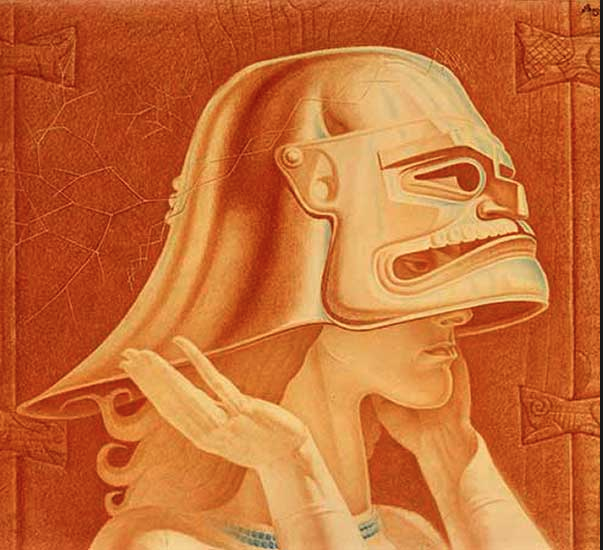
Stanisław Szukalski was a painter and sculptor who also developed the pseudoscientific historical theory of Zermatism, positing that all human culture was derived from a post-deluge Easter Island and that mankind was locked in an eternal struggle with the Sons of the Yeti. He illustrated this theory in his works.
Article source.
Artist's homepage.
Posted By: Paul - Thu Dec 13, 2018 -
Comments (1)
Category: Art, Avant Garde, Outsider Art, War, Documentaries, Bohemians, Beatniks, Hippies and Slackers, Europe, Twentieth Century
Copy Machine Art
Strange landscapes created on a copy machine using materials such as food packaging, plastic wrap, and fabric scraps to stand in for earth, water, and sky. By artist Dominique Teufen. More info: Wired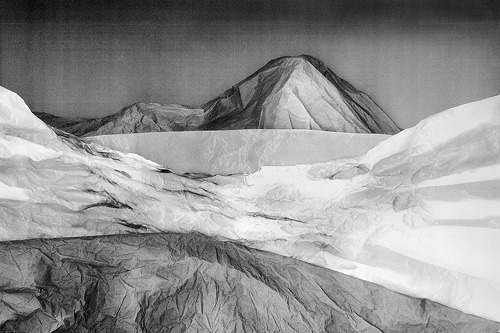
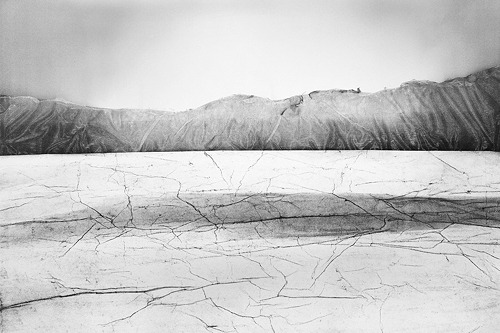
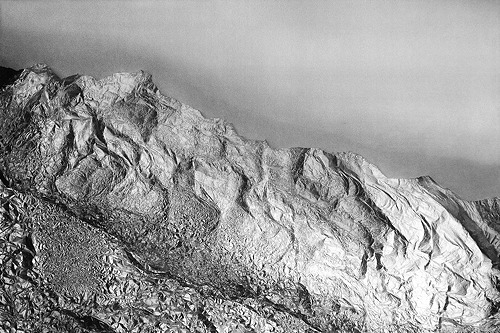
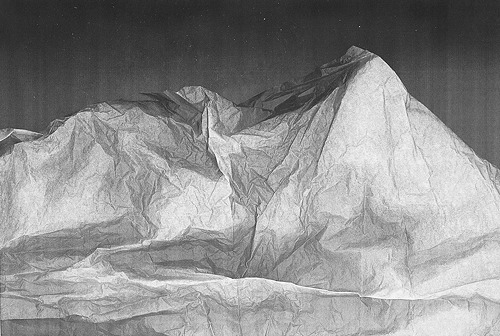
Posted By: Alex - Fri Nov 30, 2018 -
Comments (1)
Category: Art
Lady Sarah’s dissolving bathing suit
Back in the summer of 1975, there was a brouhaha about a 24-foot-long outdoor painting of a reclining nude (aka Lady Sarah) that featured a dissolving bathing suit. It was the creation of artist William Newman. Details below from Wikipedia.Note: the wikipedia article says that the painting was meant for the "inside of the building," but I think it should read the "inside of the construction site." The whole idea was that it was an outdoor painting created for the benefit of construction workers.
"At the time I was just thinking, great, I'll paint a bathing suit on it, but that bathing suit is coming off as soon as it rains. I mixed tempera paint with that famous Corcoran bathroom soap, and I knew it would wash off right away. I told Paul Richard, the art writer at the Washington Post, about it, and he wrote a story titled "Praying for Rain." The painting came to be called Lady Sarah, named after its model."
During the first night it was up, rain fell. There was a line of about 300 people waiting to look through the peephole, in reaction to the article. Before the bathing suit could be completely washed off by the rain, the piece was taken down. Newman washed off the soap bathing suit and repainted it to become permanently present. He gave the piece to the Corcoran to raise money.
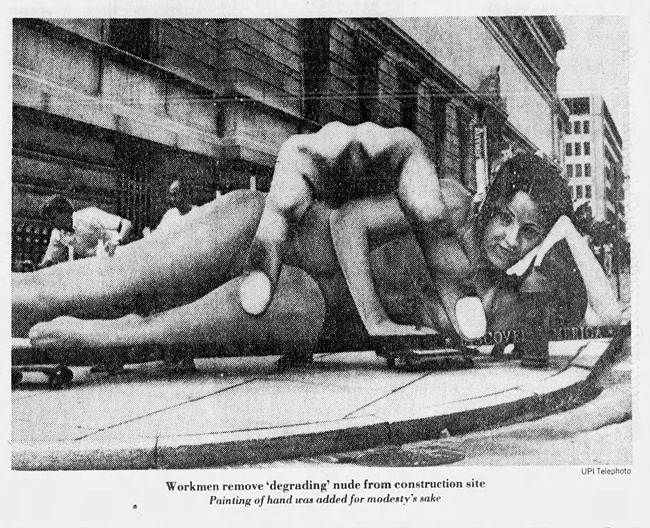
The Wilmington News Journal - Aug 15, 1975

Asbury Park Press - Aug 14, 1975

Orlando Sentinel - Aug 15, 1975
Apparently that wasn't Newman's last work featuring 'Sarah.' Two more followed, one of which again had a dissolving suit. From Washington City Paper:
The identity of 'Lady Sarah' was eventually revealed to be Sarah Tuft, an 18-year-old model and art student. I'm not sure, but I'm guessing this must be the same Sarah Tuft who's now a playwright. Photo below of Sarah Tuft (playwright) for comparison.

image source: sarahtuft.com
Posted By: Alex - Mon Nov 19, 2018 -
Comments (0)
Category: Art, 1970s
Artwork Khrushchev Probably Would Not Have Liked 17
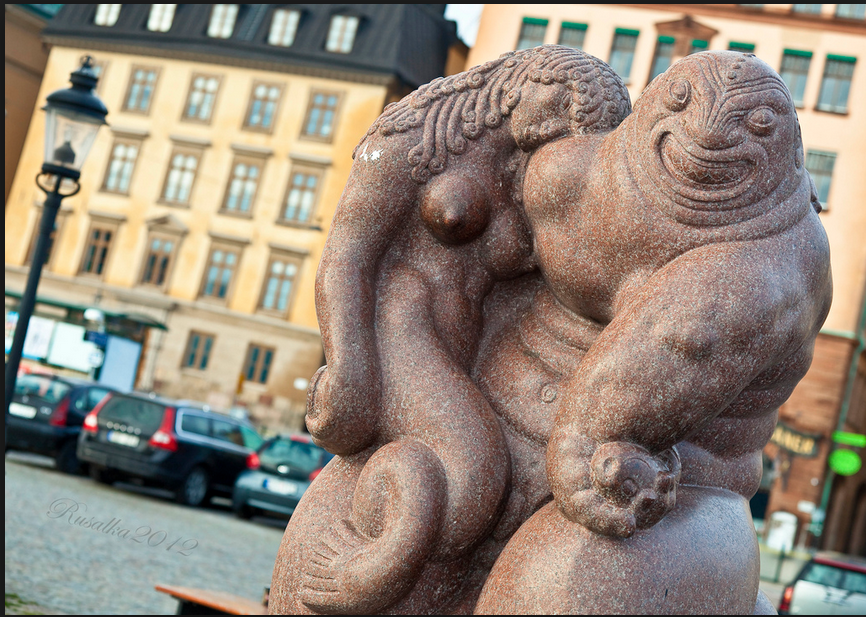
Sjöguden (The sea god) by Carl Milles.
Wikipedia page for the artist.
Posted By: Paul - Mon Nov 05, 2018 -
Comments (3)
Category: Art, 1930s, Europe, Russia
Hair Painting
Artist Jarrett Key paints with his hair. When I first saw the story about him in the Columbus Ledger-Enquirer, I thought that must mean he had cut some of his hair off and made a brush out of it. But no. He uses his hair as a brush while it's still attached to his head.Key says his inspiration came from his dead grandmother who appeared to him in a dream and said, "Your hair is your strength. Paint with your hair."

Key probably doesn't realize this, but he was actually anticipated in this technique by comedian Pat Paulsen who, back in 1966, before he became famous on the The Smothers Brothers' show, made headlines by claiming to be an artist who used his head as a paintbrush. Paulsen called it 'Cranial Painting.'
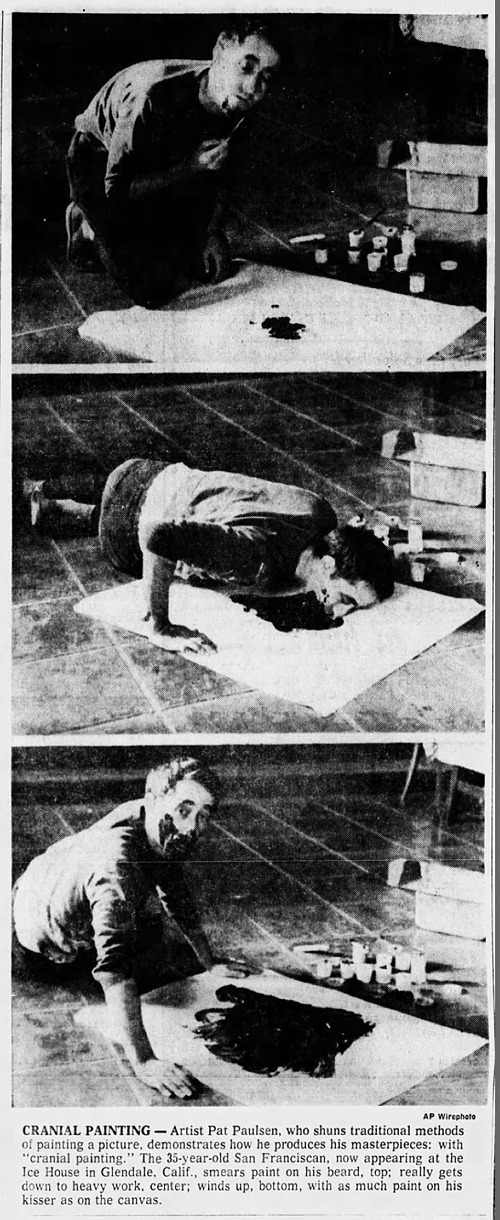
Arizona Republic - Mar 6, 1966
Posted By: Alex - Sat Nov 03, 2018 -
Comments (2)
Category: Art, Hair and Hairstyling
Mystery Illustration 79
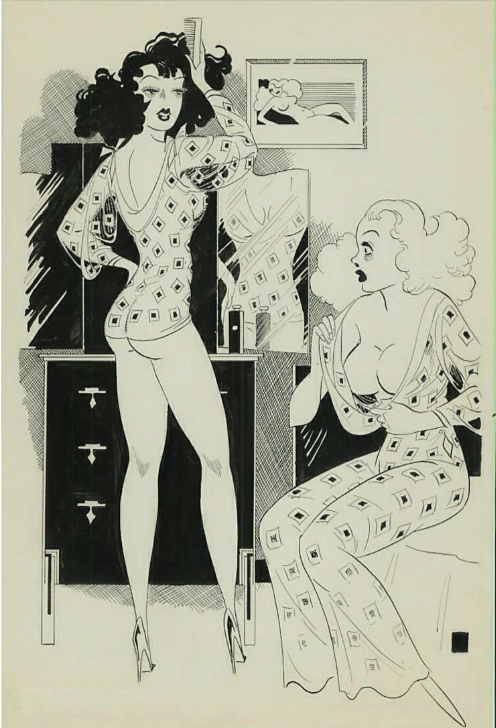
Identify the ultra-famous Golden Age (and beyond) artist behind this illustration.
The answer is here.
And after the jump.
More in extended >>
Posted By: Paul - Thu Nov 01, 2018 -
Comments (1)
Category: Art, Sex Symbols
ReActor—a house that spins and tilts
Located in upstate New York at the OMI International Arts Center’s Architecture Field. It can rotate 360 degrees, blown by the wind, but also tilts up and down based on the movement of its inhabitants. From the YouTube description:The question I can't find answered is if they put any plumbing inside of it, and if so, how.
More info: AlexSchweder.com
Posted By: Alex - Fri Oct 26, 2018 -
Comments (9)
Category: Architecture, Art
The Marionettes of Donald Cordry
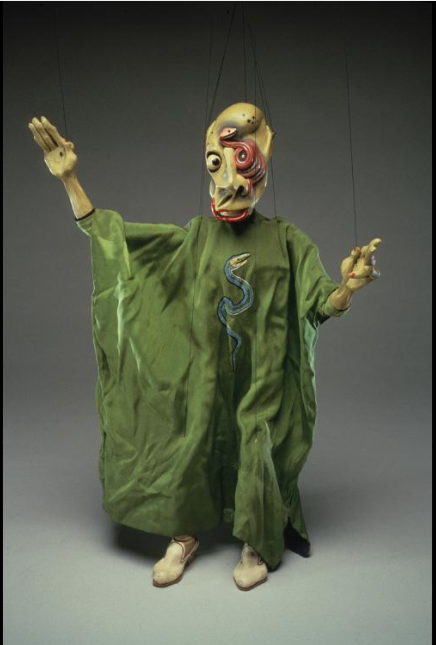
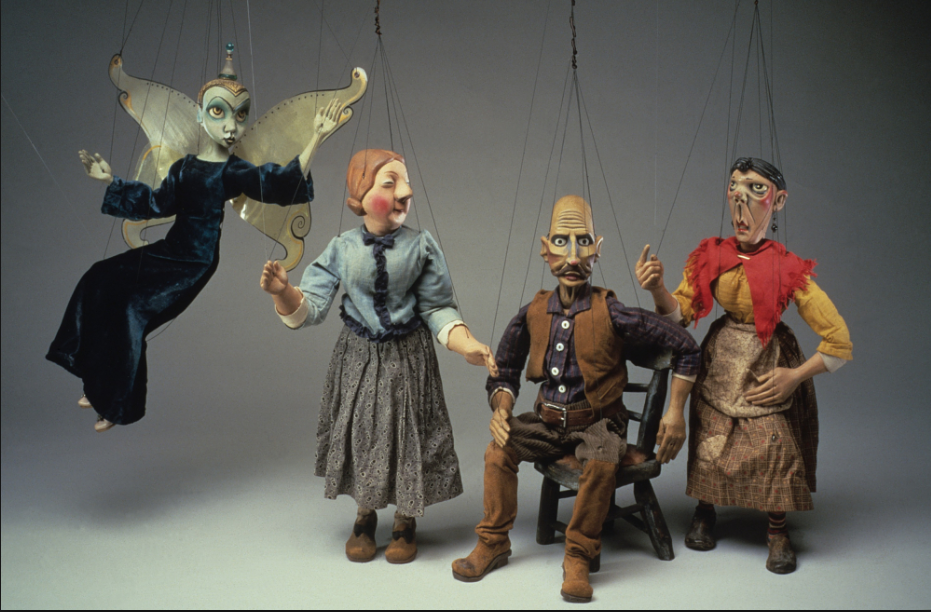
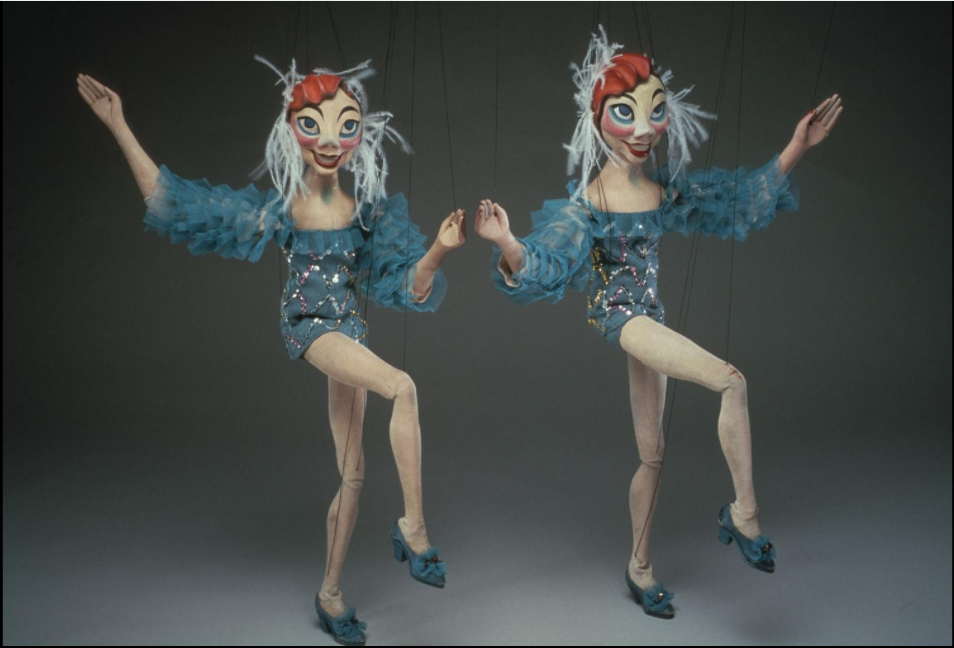
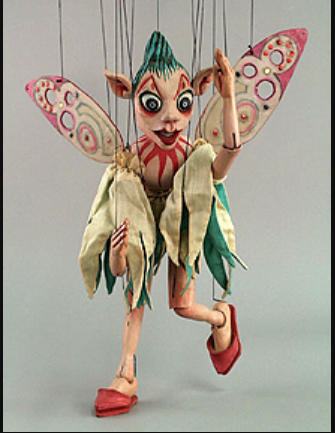
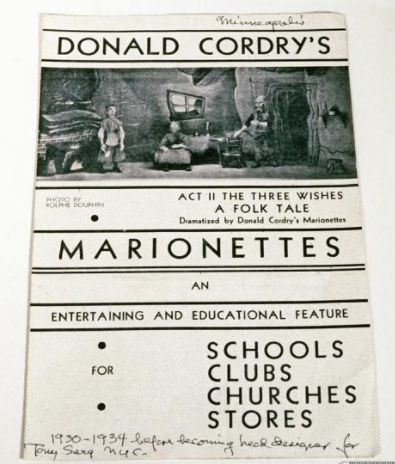
The green fairy is one of four marionettes used by Donald Cordry in his production of "The Three Wishes" that played in Minneapolis between 1930-1934. "The Three Wishes" was first written as a play for puppets by German writer Fronz von Pocci around 1900 and continues to be a popular play performed in many versions. Hand carved from wood, the fairy has an ethereal green painted face with joined eyebrows, black lips, large eyes with some hint of Asiatic features. She wears a clear blue glass pagoda head ornament in her golden hair , and she is wearing a long blue-green velvet dress, with beige tights,and rhinestone shoes with leather heels. Her wings are made of plastic. These charming carved and painted marionettes are great examples of Cordry's decorative sense of design and craftsmanship. The angel is operated with an airplane holder and eight strings.
The Three Wishes was first written as a play for puppets by German writer Fronz von Pocci around 1900. Donald Cordry (1907-1978) was a well known and highly respected American artist, craftsmen and puppeteer of the 1920s and 30s. He was gifted with a great decorative sense and his craftsmanship was extraordinary. Born in Minnesota, Cordry attended the Minneapolis School of Art from 1924-1929 and after graduation he went to work for the Board of Education. While his main job was to lecture and teach classes, Cordry took used the opportunity to create and perform his own marionette show with both hand puppets and marionettes. From late 1930 to early 1931 Cordry joined the Rufus Rose Company, owned by Rupert and Margo Rose that played the school and college circuit on the East coast. In the summer of 1931 he traveled to Mexico where he developed a life long interest and dedication to the arts and landscape of Mexico. An avid collector of ethnographic material for over 40 years, Cordry amassed a large collection of indigenous Mexican arts and crafts which he meticulously documented and researched. His passion also included Native American cultures, and in the mid 1930s he worked at the Heye Museum of Indian Art in New York City where he cataloged and researched objects for the museum. (The Smithsonian's National Museum of Natural History owns a large collection of Mexican masks donated by the Cordry family in the early 1980s.) After returning to Minneapolis in late 1931, Cordry started creating his own puppets. He formed his own company and performed shows until 1934.
The Dolly Sisters and the Three Wishes were popular with young and old audiences alike. In June of 1934, Cordry moved to New York and worked with Tony Sarg, a well known and established puppeteer in his own right, and taught classes at Sarg's Summer School. Cordry made a number of puppets for Sarg and toured with his company from 1934-1936. By 1937 poor health forced him to give up puppetry and he moved to Mexico. He did however, continue his field research on indigenous peoples and later on published two books - Mexican Indian Costumes (1968) and Mexican Masks (c1980). "The Three WIshes" was Cordry's final production before he moved to Mexico with his wife. The puppets and sets from this production were shipped in crates to Mexico and remained there almost fifty years. In 1982, his widow Dorothy Mann Cordry donated this collections to the Smithsonian which included not only the marionettes, but props made to scale and a fully operational puppet stage.
Posted By: Paul - Mon Oct 15, 2018 -
Comments (5)
Category: Art, Design and Designers, Puppets and Automatons, 1930s
Artwork Khrushchev Probably Would Not Have Liked 16

Xul Solar, "San P," 1923
I think we should just nominate Xul Solar as someone whose entire output would have displeased our Soviet realist.
More images here.
Posted By: Paul - Tue Oct 09, 2018 -
Comments (3)
Category: Art, Avant Garde, 1920s, Russia
Follow a stranger
Apparently there's a long history of artists surreptitiously following strangers around in cities, just to see what happens. It's called the Art of Following. More details from Debbie Kent in the Guardian:My assignment from Tomić is, of course, not intended to upset anyone. Rather, what I’m doing is a one-off exercise, and, as artist and writer Phil Smith puts it, is handing over control of exploring the city to someone else, chosen at random.
Smith regularly gives this task to students of theatre and performance at the University of Plymouth, seeing it as a valuable exercise. “The idea is that you’re exploring the space but someone else dictates it to you – it neutralises your will,” he says. “The intention – or hope – is that the followed person will lead you into places you haven’t been before.”
I don't see anything that could possibly go wrong with following a complete stranger around.
Posted By: Alex - Fri Sep 28, 2018 -
Comments (1)
Category: Art, Really Bad Ideas

| Who We Are |
|---|
| Alex Boese Alex is the creator and curator of the Museum of Hoaxes. He's also the author of various weird, non-fiction, science-themed books such as Elephants on Acid and Psychedelic Apes. Paul Di Filippo Paul has been paid to put weird ideas into fictional form for over thirty years, in his career as a noted science fiction writer. He has recently begun blogging on many curious topics with three fellow writers at The Inferior 4+1. Contact Us |




